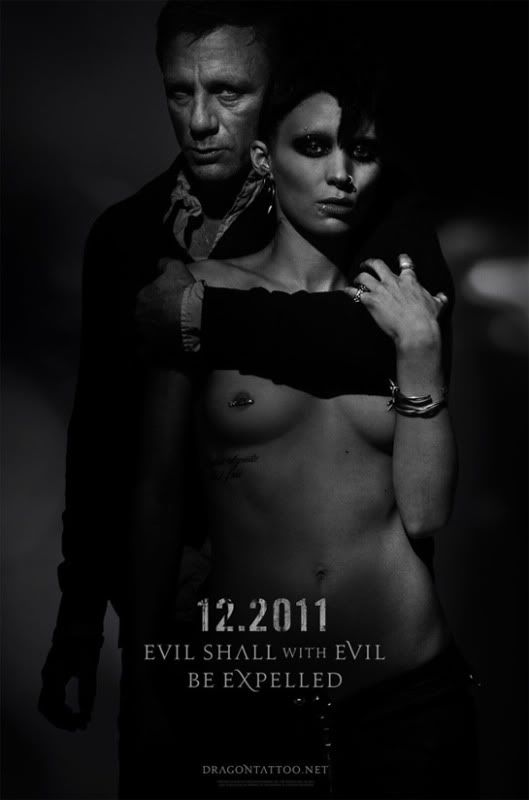
In the last few months, the early stages of marketing began for David Fincher’s adaptation of the Steig Larsson novel The Girl With the Dragon Tattoo. The announcement of this adaptation has been met with some polarized opinions as several believe it diminishes or ignores the quality of the already existing Swedish films starring Noomi Rapace and Michael Nyqvist.
Before any of this marketing began, casting of the film came under great scrutiny as fans waited for the announcement of which lucky ingénue would snag the role of Lisbeth Salander, and perhaps even more importantly, would she be able to fill the combat boots of Noomi Rapace, whose performance inspired an (ultimately unfulfilled) campaign to get her considered for an Oscar.
That lucky actress wound up being Rooney Mara, most recently seen in her brief but notable appearance in Fincher’s The Social Network. The benefits of casting an unknown in this role are fairly obvious, it’s a part that cannot come with any expectations, because any actress called upon to play it will have to undergo such extreme transformation that any prior knowledge of her work or skill would inevitably interfere with our perception of this character. In other words, with a role as extreme and anti-Hollywood as Lisbeth Salander, it benefits the audience to have never seen her before. She is an entity all her own.
However, true to form, the marketing machine of Hollywood has taken the reigns of her image and put forth a series of posters and promotional photos that quite frankly would upset any fan of the novel or the original Swedish film. For example, the poster. We see Daniel Craig as a threatening Mikael Blomkvist, his arm wrapped protectively around a topless Mara, her face blank if not helpless. Now, I will be the first to admit that this poster does a fantastic job of shocking its audience, as the film will inevitably do, but the effect is achieved at the expense of one of the fundamental themes of not only Salander’s character, but the novel itself.
The original Swedish title of the novel is Man Som Hatar Kvinnor, which translates to “Men Who Hate Women.” Lisbeth Salander is described as a “woman who hated men who hated women.” And yet here she is, naked, guarded by the strapping Craig, totally exposed. We go further into the images and see her getting a tattoo on her rear, her back arched with a seductive cigarette hanging out of her mouth. Is it badass? Absolutely. Is it meant to be titillating? This is Hollywood we’re talking about.
The entire foundation of Salander’s character is rooted in her feelings toward men, particularly the negative feelings. This is a young woman who clearly does not care about how people view her, including if not especially in a sexual light. This is something the Swedish films captured superbly, and at no point was Rapace made to be any kind of sexual object, a crucial point at that considering how victimized she is throughout the novel.
I am still very eager to see the film and I have high hopes for Mara’s performance, if her physical transformation is any indication to the lengths to which she has gone to embody Lisbeth. Obviously the marketing campaign is not necessarily indicative of the film or the filmmaker’s goals, but it does once again bring to an interesting light the absurdity of Hollywood’s obsession with finding something to sexualize, even in a film whose message is about the evils of just such a philosophy.